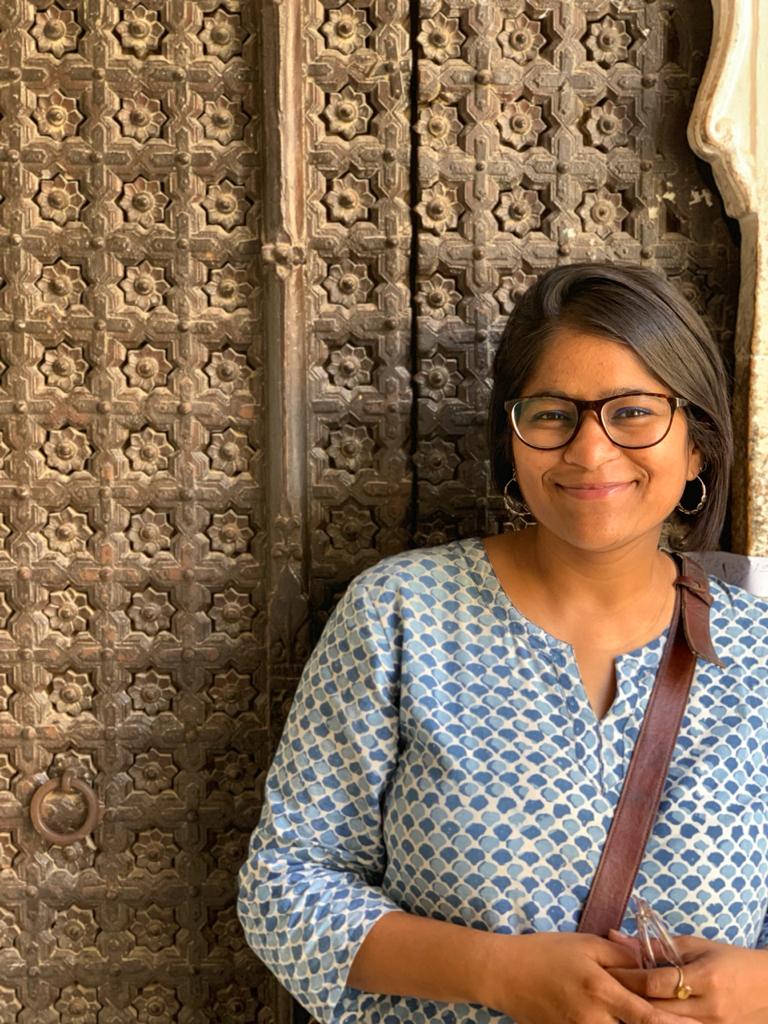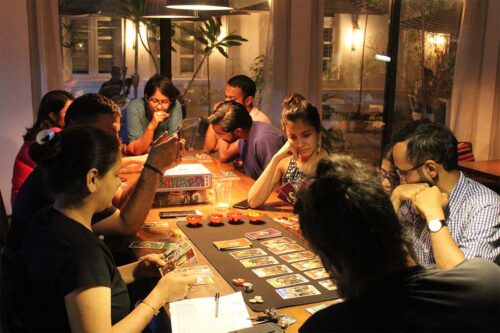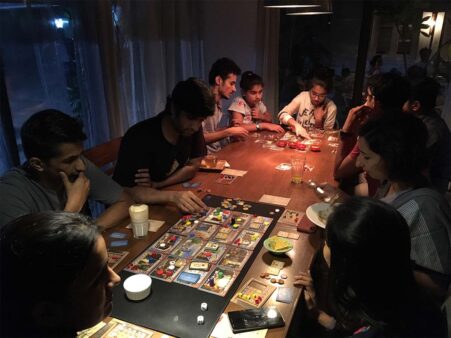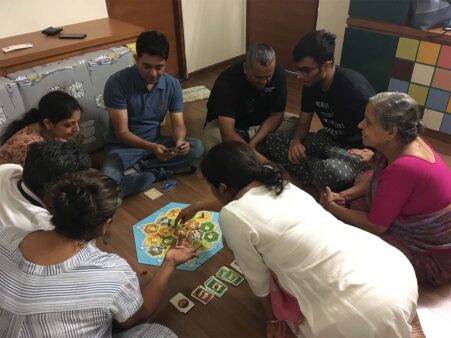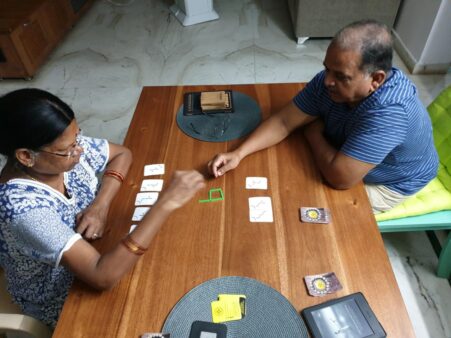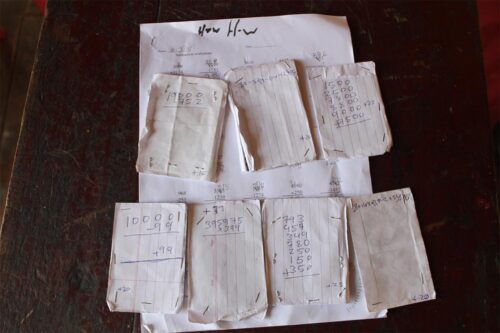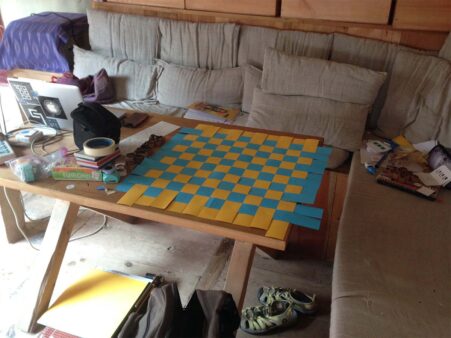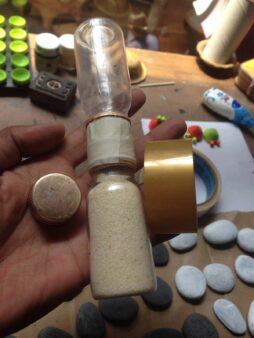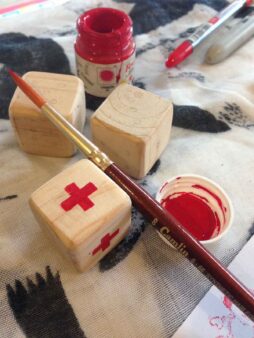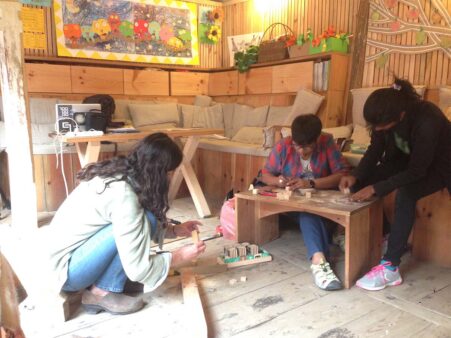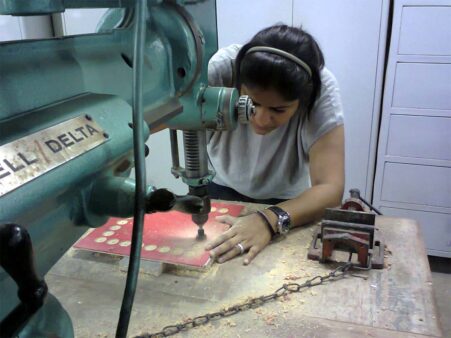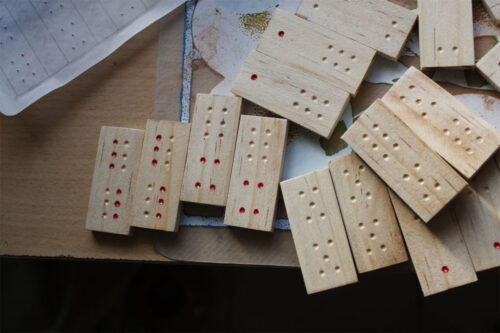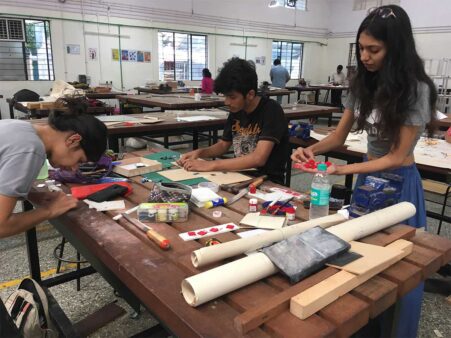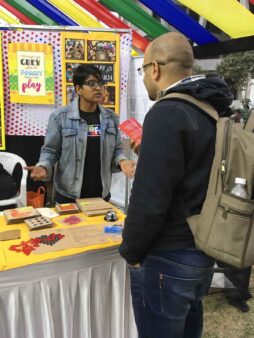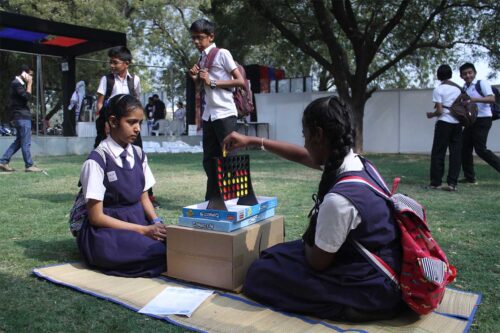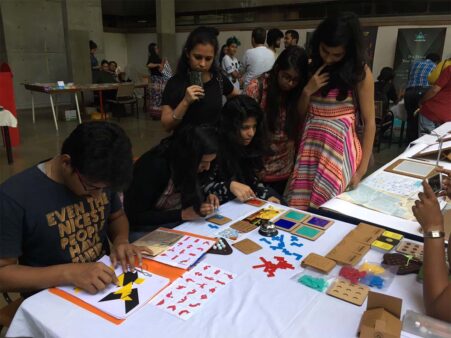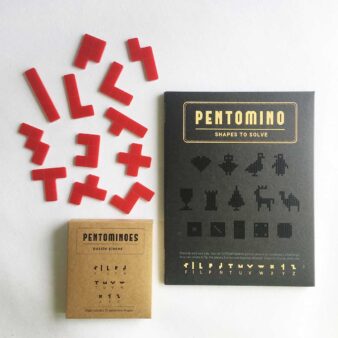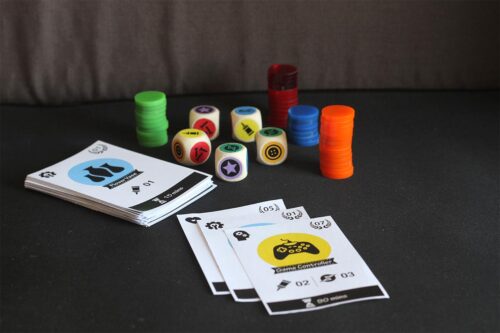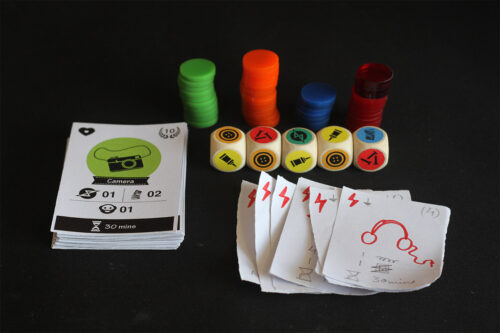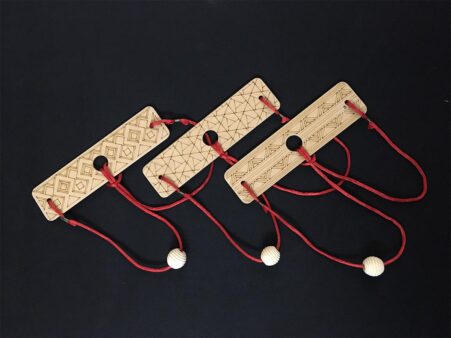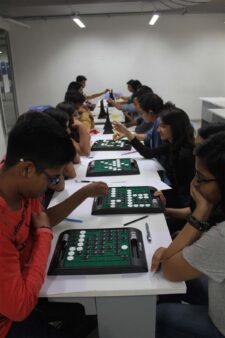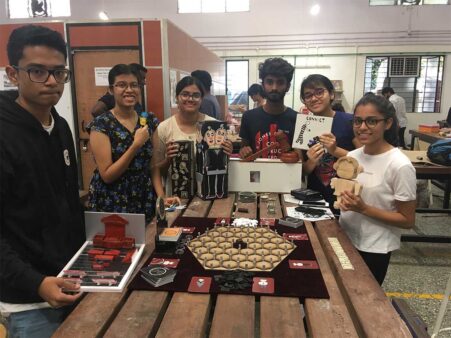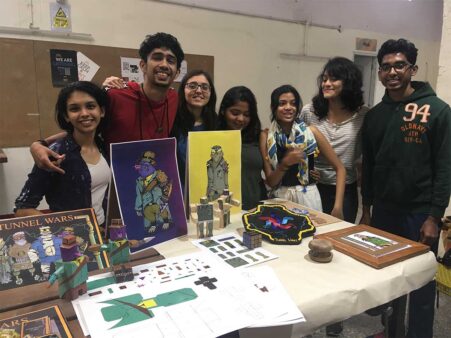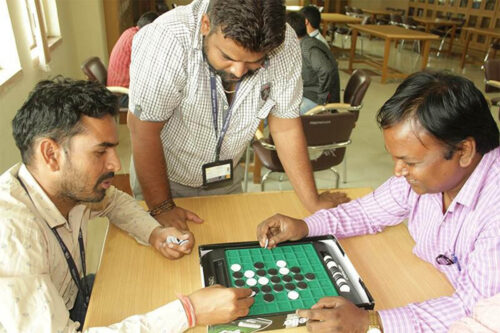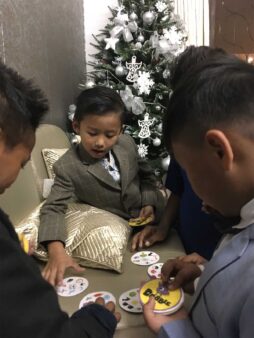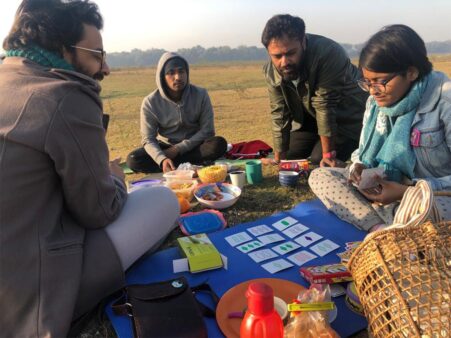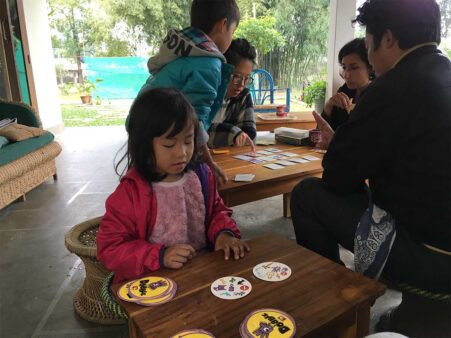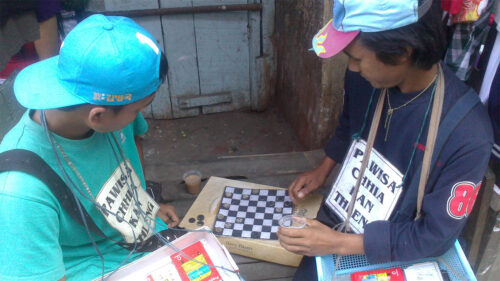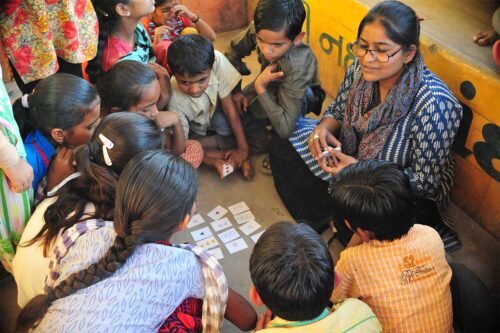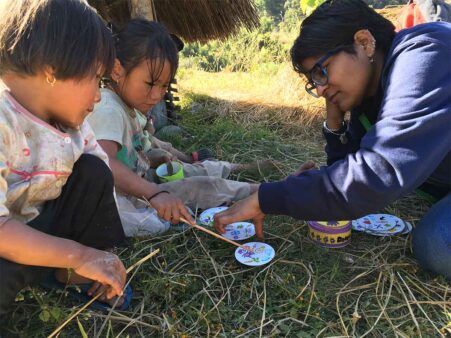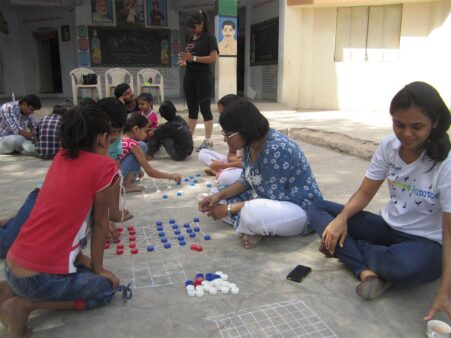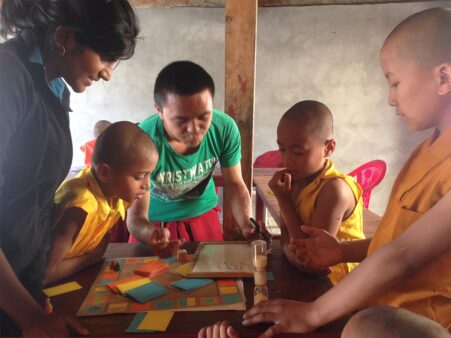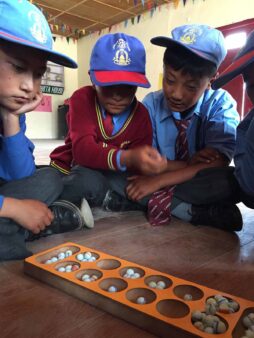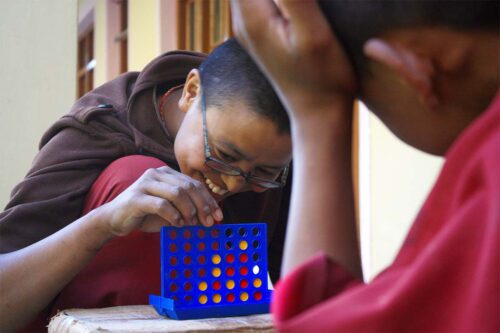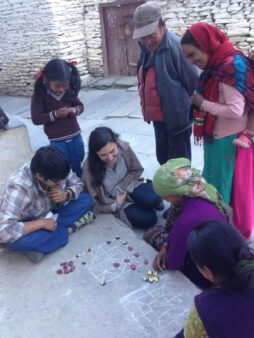The Importance of Games by Shradha Jain

Shradha Jain is a Game Designer, Mentor, Entrepreneur and the brain behind Studio.Clock.Works. We got a change to get into conversation with her regarding Games and why they are so important.
I am Shradha Jain, collector of vintage, classic and contemporary tabletop games. I am the founder of studio.clock.works. I have a background in Fine Arts (printmaking) and I further pursued my masters in Design from National Institute of Design, Ahmedabad specialising in Film and Video Communication. I can be held responsible and the prime reason behind my parents relocating to Ahmedabad 7 years ago and the brain behind starting a small restaurant with them called “Dilliwale”. Currently I am part of the fraternity at Srishti Manipal Institute of Art, Design and Technology in Bangalore, where I mentor and guide aspiring practitioners in the field of Game Design. The subject I loved most during formative years in school was definitely ‘Craft & Art’ and I still have my supplies from 2003 that I use. On the opposite spectrum, the subject I despised the most was History aka Social Science. I am amused that history and geography are now in my good books and I continue to dive deep in the history of things that interest me. This brings me to the part where I discovered or I'd rather say rekindled my love for games a little more than a decade ago. Circa 2009.
AG: What got you into games?
In one word - Curiosity.
In more than one word- my trip to Kutchh during my month long stint with Kala Raksha in November of 2009 and meeting an elderly lady named Sophie Ahmed. Sometime later in 2010, I was invited & hosted by her in Mumbai and I visited a centre run by her called Luba Hamied Centre for Children in Babulnath. To describe the feeling of the moment I entered that space was very similar to that of Alice in Wonderland. I had never seen a place so full of colours, objects, books, toys, games, paintings and more in such an unconventional manner. You could just spend hours looking around, touching & holding things you were curious about. I think that was a moment of realisation, that there is still so much more to learn and it made me wonder when did I actually seize to value the importance of such playful objects. As a parting gift I was given a pack of travel dominoes to which I responded, “Thank you Sophie, but I don’t know how to play it!”. To which she responded, “Don’t worry! You’ll figure it out”. The rest is history. Me and my restless mind and hands went straight back to NID and made the most of the time left as a student at the KMC (Library), the IT lab and the student workshop. I would take help of friends and workshop kakas to dig some material from the bins and craft the games using a drill machine and jigsaw. The idea was to build rather than buy the games. Also because I had no money but a lot of other resources at my disposal that was a luxury. So everyday I would pick one traditional game title and research it on the internet. I would then draw grids using chalk or on paper and find right sized pebbles to play it with friends at Chaigate. Soon this everyday saga caught the attention of a very respected NID community member, a great guide, design thinker and philosopher and above all a god sent mentor - Late Professor M.P. Ranjan. He is the force behind what I continue to pursue and explore till date. I have emails exchanged between us from a decade ago when all this was a new territory for me. Those words of encouragement and the helping hand always extended to help and guide anyone seeking is something that I will forever remember and pass on.
AG: Tell us about your philosophy and how it affects your process.
I am a big believer in the idea and fact that simple games have the power to change the world for the better one game at a time. I have my favourite quotes written in mostly all of my notebooks. These serve me as a gentle reminder that lies in the depth of these small sentences and combinations of words. They are plain simple in their construct yet so profound that it fills your heart with joy and charges me instantly. Similarly, I don’t like to bombard newbies who watch me play with big words or fancy names of games (eventually I do) but I usually begin with some of my favourite small boxed games that can be learnt in under 5 minutes or even less. I use a lot of filler games as a hook as a means to open the window to something from where you would not want to return but explore on your own at your own pace. Classic puzzles and games are something that will never go out of style. So in the process I always make sure there is a balance between classic and contemporary games that are introduced in the non-digital as well as digital domain. There is so much out there in terms of information, knowledge, entertainment, technology and so on that at times I find myself entangled by a lot of strings attached to each of these. While I am not against the ‘advancement’ of the species who are able to create/ generate so much but I do hope it’s not merely for statistical gratification or validation. I insist that we pause and reflect what value these add to our lives. How do we connect to our fellows? How kind we are to each other? What is this imaginative race we assume we are a part of?
For instance I always try and take a moment to pause and reflect on my practice and realign my goals. It’s natural that we all strand away a little here and there while trying to achieve something and having these moments help immensely to progress with greater clarity. In the process one also finds that there are new sticky notes that have found a place and some that do not seem relevant anymore.
For instance I always try and take a moment to pause and reflect on my practice and realign my goals. It’s natural that we all strand away a little here and there while trying to achieve something and having these moments help immensely to progress with greater clarity. In the process one also finds that there are new sticky notes that have found a place and some that do not seem relevant anymore.
Two of my favourite quotes about travel & play:
Travel is more than the seeing of sights. It’s a change that goes on, deep and permanent, in the ideas of living.
- Miriam Beard
Children learn when they play. Most importantly, in play, they learn how to learn.
-Fred O. Donaldson
AG: When, why and how are games important?
Yes, games are important. I would say ‘play’ is important and games are one of the many ways to trigger emotions and facilitate the experience we have when we play.
When?
From the early formative years till the very end play is an important part of our evolution. Sadly, in the systems and societies we dwell in we tend to distance ourselves from the world of play and games way early because we are expected to focus on studies in a very academic sense. In a way the most beautiful part of our childhood is snathced away to pave way for adulting. But we are here to change that idea that games are for children. Games are essential for not only for the sole purpose of our recreation but much more.
From the early formative years till the very end play is an important part of our evolution. Sadly, in the systems and societies we dwell in we tend to distance ourselves from the world of play and games way early because we are expected to focus on studies in a very academic sense. In a way the most beautiful part of our childhood is snathced away to pave way for adulting. But we are here to change that idea that games are for children. Games are essential for not only for the sole purpose of our recreation but much more.
The Why?
Games are great when we need to stimulate our senses for pure leisure or when we wish to challenge ourselves to enable personal growth or when we want to engage in a meaningful activity which is recreational as well as rewarding. I can give a 100 more reasons why games are important and I am listing the more obvious reasons right here- improves our reflexes, strengthens our memory, enables the risk taking factor, and helps in developing logical reasoning. analytical and strategic thinking, develops eye-hand coordination, gross and fine motor skills, improves negotiation capabilities, etc. In short it teaches you life skills like no other medium can. Games are important for our social and mental health.
Games are great when we need to stimulate our senses for pure leisure or when we wish to challenge ourselves to enable personal growth or when we want to engage in a meaningful activity which is recreational as well as rewarding. I can give a 100 more reasons why games are important and I am listing the more obvious reasons right here- improves our reflexes, strengthens our memory, enables the risk taking factor, and helps in developing logical reasoning. analytical and strategic thinking, develops eye-hand coordination, gross and fine motor skills, improves negotiation capabilities, etc. In short it teaches you life skills like no other medium can. Games are important for our social and mental health.
How?
Games give us an opportunity to interact and participate with other fellow beings in a more engaging environment. These interactions might take place in a synchronous or an asynchronous format depending on geographical distance and time zones. To add to this, it has the potential to bring people from all walks of life irrespective of gender, colour, class, social strata, age, etc under one roof. It helps bridge the growing gap between generations in the current city scenario and lifestyle.
Games give us an opportunity to interact and participate with other fellow beings in a more engaging environment. These interactions might take place in a synchronous or an asynchronous format depending on geographical distance and time zones. To add to this, it has the potential to bring people from all walks of life irrespective of gender, colour, class, social strata, age, etc under one roof. It helps bridge the growing gap between generations in the current city scenario and lifestyle.
In the end it’s about playing a game well and not just winning or losing.
AG: Any games you have designed and or worked on? Please tell us about them, their impact and how they fulfill their set goals.
In a series of classic games and puzzles I have made under SCW, I mostly relooked at public domain titles such as Tangrams, Pentominoes, Solitaire and Sudoku. My fascination with these was to explore different materials available in close vicinity and technology I had access to. From screen printing, die-cutting, offset printing and laser-cutting, I developed a language that is appealing and process driven and well within my reach on a daily basis. Thus emphasizing the need to localise the need for producing more locally and supporting small business. The main objective was also to create games that are compact and can stand the test of time with the replayability value and expansion packs that can be made available as free to download format or in physical format in the future. My favourite and the most popular amongst the series is the Pentominoes. There are 3 products- namely challenge cards, A3 challenge sheet and shape card challenge that is available online. Pentominoes is a mathematical puzzle and is used worldwide to teach basic concepts of area, perimeter, volume, tessellation, similarity, etc. It is suitable for all ages above 6.
I am also playtesting a game called “The Second Life” with my 8 & 12 year old nieces these days. It has been received well and the game is about fixing broken things and resource management to give them a second life and gain victory points. The player to have fixed the most things and also valuable ones to gain bonus points is declared the winner. It is an attempt to plant the idea of repairing, as important and invaluable. Another in-house project that is at an elementary stage of development is a worker placement board game called “The Coffee Cultivars”. It is about growing coffee and processing the same to fulfill the market demand.
The most recent project I concluded was a ‘Game localisation’ project for an award winning international tabletop game which would be available in India very soon. It was the first of its kind project I tried my hands on and I am glad the project came along during early days of the pandemic. Game localisation primarily means translating the entire content of a game in one of the regional languages. This implies using a lingo that is commonly more accepted in today's day and age in a particular geographical region. It requires one to understand the context in which the game would be entering the market and the target group it is being directed towards. Since there are only a handful of titles that carry rules in regional languages in India, I jumped right on board when I was approached for this project. I would really want to open up the world of contemporary board games for the masses and market in India. The good thing is the market in India is slowly and steadily warming up to the idea for games for grown-ups and games outside of pure STEM education for younger audiences.
AG: Why is game design considered whimsical? How is the scenario changing?
Game design is considered whimsical because the attitude towards it as a career option is still not as popular as other more mainstream design career pathways in general. While this preconceived notion towards design as a career has gained momentum over the last few decades and the industry is now offering more specialised roles and building multi-disciplinary teams, it is good news for those wanting to explore game design as their core competency. While the digital gaming industry has been on a constant incline, the board game industry has also been in its golden era. The most funded projects on the international crowdfunding platform kickstarter has mostly been around games and more specifically tabletop games.
There are many dedicated forums, social platforms, servers and channels dedicated to bringing the community of developers, designers, players and publishers together. Some of the annual, most visited and popular international conferences include Game Developers Conference (San Francisco), Gen Con (Indianapolis), UK Games Expo to name a few. There are courses being listed on top colleges worldwide offering Game Design at Bachelors and Masters level besides numerous short term certificate programmes also being offered on open source learning platforms such as Udemy, EdX, TED-ed, etc . The interested candidates can choose from the many pathways under game design from being a Game Designer to more specifically Game Artist, Level Designer, Game Developer, Narrative Designer and so many more specific roles. The increasing academic-industry partnerships have enabled educational institutes to co-develop curriculums that bridge the gap and create a holistic programme that is at par with the current industry expectation.
The democratisation of game development tools and the open source game engines has enabled and given rise to many indie game studios releasing titles that are not necessarily mainstream but have pushed the boundaries and created new genres within the industry as well. There are now marketplaces where these games and designers have found a solid fan following and have been able to monetize and crowdfund and meet the rising demand. The communities are expanding and only growing stronger by the hour and the day is what I would say. It’s all been upwards and onwards in the Game Design community.
AG: Games are the drivers of innovation and creative thought. Please elaborate.
Games are the drivers of innovation and creativity. This statement holds true for many reasons and in many ways. From how & where I see this, most of my in-house and collaborative projects have been a direct result of a creative process triggered by my hobby. For instance, whenever I am researching a game whether classic or contemporary, I look at my surroundings, I think of the access I have to various resources to make something quickly and instantly to be able to play it. Using this quest time of looking around as a starting point infused with creative approach, I am then able to create a version of my own to play in a very short time and fulfill my desire to play. From using natural and manufactured man-made materials, I spend some time exploring for a while and I always try to document the process to share with others. It is a practice that I follow while translating & prototyping my ideas and taking them from paper to a product.
Gaming can be an expensive hobby. This does not mean that you can not have something you desire with a tag or that you must always keep creating out of what is available. I always think of ways to expand the community by coming up with ways that shouldn’t stop anyone from pursuing it due to affordability, access or any other reason. Having said that, things that we make with our very own hands naturally tend to take precedence over something that is store bought, especially as children. I remember vividly the way I used to run up to my dad every evening when he would return from work to show him my latest paper lantern or an origami box or what I learnt during my craft class in school, etc. And I have continued that habit till date because I take pride in something that I have created with dedication and love.
When I was in Nagaland I had this idea of using the readily and abundantly available local material such as bamboo to make one of my favourite games called ‘Mancala’ See the images for reference. Another one was a ‘backgammon’ made by weavers of Chizami village on a traditional backstrap loom. Both these experiments are the results of collaboration, creativity and innovation. As a practice whenever I travel to mountain communities, I always try and look for ways to demonstrate the use of locally available materials and to create games through that process. This approach helps in more ways than you would think. Firstly, by not adding or bringing new alien materials tagged along on the journey. Secondly, by making an effort to see and learn from the locals in the material processes they are familiar with and also helping them see the value from my perspective. It is a mutual exchange of knowledge we try and share. Thirdly, it helps in bridging the gap between me as an outsider and them, while co-creating and learning together.
AG: Tell us about some of your experiences with different age groups and games? (kids to corporates and senior citizens and so on.)
Some of the most vivid experiences I have had are with grown-ups who have been reintroduced to the world of games. There is a sort of familiarity and association with this format of recreation in this age-group and they are more open to learning and switching back to this any day over the digital. I have conducted workshops for the hospitality sector as well as educational institutions across several states in India.
There was one where a recreational training programme was conducted for staff and faculty of a design institute in Jodhpur. It was great to see the participation level and enthusiasm amongst the overall staff members. Many of whom played games like Othello, Mancala and Tangrams for the first time. The good thing of conducting workshops for adults is that the process of explaining games gets expedited and there are more active discussions that take place in a short span of time. Similarly, there was a staff training for a hospitality group in Ahmedabad who had set up a dedicated play area with indoor and outdoor games. The idea was to provide their in-house staff with basic knowledge of the resources they had at their property so they all can engage with their customers and clients as and when needed. It was nice to see that big names in real estate value the importance of engagement.
I have also reached out to my peers who have been working in different parts of the country and sent packages of games that are then used for classroom teaching and recreational activities. One such outreach program was with Darbari Waldorf School in Jaisalmer with Design educator and a good friend of mine Gaurav Juyal. The main thing I have observed about such programmes is not the material resources that one is able to deliver or raise funds for but rather an active engagement by a peer who understands the importance and learning opportunities that can be created using these resources. It quadruples the impact of such design intervention and has a more lasting impact. In this way people I have partnered with over years have been a great catalyst and each of them have been an inspiration to me.
For instance, in 2018 we started “Tuesday Game Nights” in collaboration with Project Otenga in 2018, since our philosophies matched at many levels. Mindful living and slow living is what we practice. The board game community grew in a matter of a few months and each time there would be patrons bringing along their family or friends for an outing for board games and food on a tuesday evening. They were there for an experience that was like any other they had heard of before. There was familiarity yet something new that they were looking forward to. Essentially meeting ‘other’ people from different walks of life around a tabletop game. The common string binding them here is boardgames and the joy they derive from playing with the ‘other’ amongst their small tribe of people sharing similar interests.
AG: How has covid impacted you?
Being an extremely social activity that tabletop gaming is, this unprecedented time of covid has certainly jeopardized the social network we at SCW have been working towards building. However, it has also enabled new ways to connect and look at other tech tools to stimulate that experience of physical-social spaces. Having said that, I would still want to go back to hosting community game nights and be with my tribe anyday. There is nothing more important to me than the value of the relationships that are built being part of this community and the joy it brings to all those who participate. I look at this time as an opportunity to create a system that can be adopted and adapted to by anyone who wishes to work in community building through games.
AG: What are your thoughts on the Future?
As an educator in the field of Game design it has given me hope that the future is bright and that games are here to stay as they have over all these years. But this time around people would value the human interactions in such a setting more than ever. Games as a field of study has been finding its niche in other fields directly related to social impact, applied science, health and wellness, edu-tech and a lot more. It is going to be onwards and upwards from here. Time like this ongoing pandemic has further highlighted the importance and value of social interaction and connection at a very basic level for emotional well being irrespective of age and gender, class and colour.
AGI is a great initiative that is collating and curating the experiences across diverse disciplines in design. It is interesting to note the inter-relationship between these stories and the thread that binds us all as a community. This shared reality is something that is not only very inspirational but is a great way to guide and encourage the ones aspiring to take on a journey themselves. This blog is a rich resource of carefully and regularly fuelled mindful content and I hope it spreads far and wide overcoming all boundaries and helping millions place trust and belief in themselves.
Be a changemaker beginning with your own families and friend circles. Try to extend a hand in your communities to catalyse a change in whatever small way that you can.
Sharing a verse from a very popular hymn we used to recite in school and that always serves as a gentle reminder, bringing hope for me:
Sharing a verse from a very popular hymn we used to recite in school and that always serves as a gentle reminder, bringing hope for me:
It only takes a spark
To get a fire going
And soon all those around
Will warm up to its glowing
